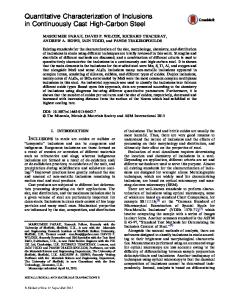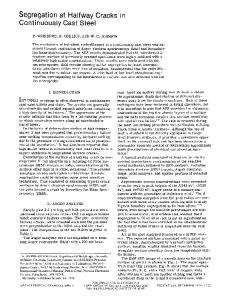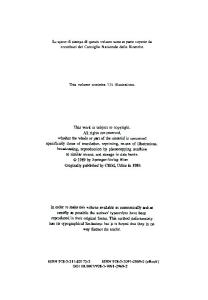Cavity sequences in continuously cast billets: Part II. Stochastic models
- PDF / 262,637 Bytes
- 10 Pages / 612 x 792 pts (letter) Page_size
- 35 Downloads / 322 Views
I. INTRODUCTION
CENTRAL porosity is a common—although undesirable—phenomenon in billet casting, which raises a number of questions. Part I of this article,[1] has analyzed the rhythm of cavities on the basis of empirical data from continuously cast round billets. This article focuses on mathematical modeling of the cavity process. Chains of central porosities are again viewed as one-dimensional time sequences. The aim is to construct simulations which replicate as many features of the process as possible. The literature on the cavity phenomenon has been reviewed in Reference 1. It seems that modeling of cavity dynamics has not been attempted previously. Two basically different routes are known for the simulation of dynamical systems: deterministic models and stochastic models.[2–5] Deterministic models rely on differential equations, which embody physical principles of the process. Stochastic models, in contrast, can be built without full understanding of the laws governing the process. They require empirical data to extract unknown coefficients. While the solution of a deterministic model is unique (when initial and boundary conditions are given), stochastic simulations involve random numbers and, thus, generate an infinite variety of realizations. The quality of a stochastic model will be the better the more physics is included.[5] This article presents five simulations of the cavity process. The first two (Markov and autoregressive (AR) simulation) are pure “black-box” models. The third model exploits a specific relation between the variables which has been revealed in the empirical data. Features of the second and third model are combined into the fourth model. Because all these models are too coarse to resolve the differences between the three cases of the data analysis, their parameters have been determined from the combined (concatenated) signals. The bridge model—again stochastic in nature— incorporates some physical considerations on the cavity formation process. It is capable of differentiating between the three empirical cases. K-H. TACKE, Head, is with the Department of Metallurgy, Max-Planck¨ ¨ Institut fur Eisenforschung, D-40237 Dusseldorf, Germany. Manuscript submitted June 12, 1998. METALLURGICAL AND MATERIALS TRANSACTIONS B
All models profit from the preceding data analysis: unknown parameters are derived from the empirical data and the model output is compared to the corresponding diagrams and measures from Part I of this study. This article uses the same definitions and notation as in Part I of the article. Model results are displayed using five characteristic diagrams, in the same format and with the same scaling as before. The first graph shows the binary signal with 19,080 samples (to be compared to Figure 3 in Part I). The orientation is according to the time of cavity generation and, thus, is against the withdrawal direction. This diagram is followed by the autocorrelation of the binary signal (cf. Figure 4 in Part I), the power spectrum of the binary signal (cf. Figure 5 in Part I), the
Data Loading...











